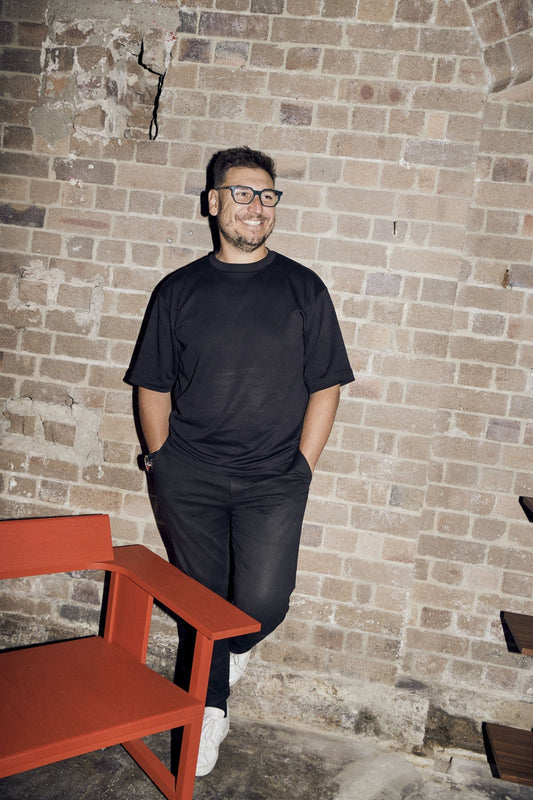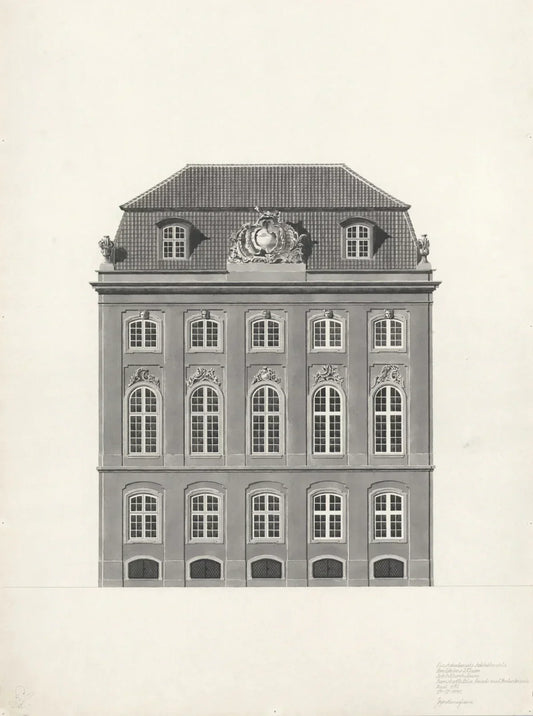Faye Toogood has emerged as one of the most prominent women in contemporary design today. Her furniture and objects demonstrate a preoccupation with materiality and experimentation. All of her pieces are handmade by small-scale fabricators and traditional artisans, with an honesty to the rawness and irregularity of the chosen material.
With an academic training in the theory and practise of fine art, and a vocational background at the forefront of the magazine industry, Toogood approaches product design with a singular and acutely honed eye. Her highly sculptural work, while showing an astute respect for the past, is derived from pure self-expression and instinct.
Toogood’s objects are grouped together into her trademark numbered ‘Assemblages’. This allows her to avoid the formulaic, to experiment with the materials and processes that dominate her thinking at a particular time. With each Assemblage, she engages not only with the products themselves but also with the three-dimensional space in which they are exhibited, working across multiple disciplines to create a single body of work with an intuitive and unified narrative.
We sat down with Faye to ask her a couple of burning questions about her design ethos, the art of play and what could possibly be next for the modern-day renaissance woman.
Enduring design is sustainable design, what do you believe are the essential ingredients for lasting, timeless design?
First and foremost all my materials are high quality and timeless I hope. They are reparable and can and should be passed down generations - dare I say just like we used to buy and make furniture. I instil a very similar approach in my fashion label. My material choices are never trend driven - I stumble across finishes I’m interested in - from sculpture to antiques to industrial finishes. My background in fine arts and art history means that I also look back, to where I find inspiration and narrative from traditions, crafts and different artistic movements. This means my designs are rooted in history, modern but inspired by the past - adding to a sense of timelessness.
The Dough and Plough collections are another manifestation of Toogood’s ‘playful’ outlook. How do you consciously capture the art of play? Is it something you can create, or does it have to be innate?
It is a really strong desire within me to capture that first pure moment of creativity. The only thing I can really liken it to is how children just create. They pick up something and they just make something. It comes really naturally to them. They don’t labour over it, they don’t look at it too much, it’s just there within them. And as you get older or maybe more trained or more educated, it becomes harder and harder to get back to that original point of creation or one’s innate creativity.
In the studio we now develop all our designs from maquettes and it feels like the most honest and pure way of working. The maquettes are very much not thinking about what the end result is. It’s very different to model making something that you’ve drawn up, or the process of getting something from 2-D to 3-D. It’s just play, and therefore the play is with anything we have around—paper and cardboard, sellotape, masking tape, and wire. Anything that’s in the studio, ubiquitous materials that are valueless. Those are used and then I start to think about how I might be able to translate that into other materials.
You once said that you, “set out to unlearn the process of design and build a new vocabulary.” Why is that important? Is it something to which all designers should aspire?
Yes, this was referring to my Assemblage 6: Unlearning which was a really important moment in my work. I was trying to find my own language, my own vocabulary in form. That whole process was, as it says, unlearning everything that I’d learned before, and trying to create something that was moving forward. The process is now taking maquettes that I make in the studio and then getting them to be re-created in life-size form—really trying to work on those original first maker’s marks and all the energy that goes into that very first uniqueness of an idea. It’s been really liberating, and this collection came out really quickly. Previously, it took me years and years to work on different collections and move on to the next assemblage. But having found this new vocabulary, it’s allowed me to get this and my more recent Assemblage 7: Lost and Found, out in a more confident way.
N*thing is Possible – you took single use plastic bottles and recreated typical rattan chairs and stools. What other forms could you envisage? Is this the future of design?
I worked simultaneously on the rattan and recycled plastic version with craftsmen in Indonesia. The recycled plastic in this case is especially suited to weaving, hence comparable to Rattan technique and similar items. I can imagine more outdoor furniture in this technique, durable and lightweight. Using recycled material is inspiring, not necessarily THE future as it is simply prolonging the materials life cycle. The beauty of traditional rattan on the other hand is its biodegradable nature in the long run.
With your impressive ever-growing repertoire – what’s next for Toogood?
We have a number of exciting design collaborations with furniture companies coming out over the next 18 months - exploring furniture, upholstery, rugs & textiles. We are delving deeper into the future of Toogood homeware as well as new furniture pieces.
I am in the process of renovating and redesigning a Victorian manor house in the countryside and am looking forward to its completion in 2023.
2023 also marks 15 years of the studio so we will be celebrating, hopefully with our Toogood extended families around the world.



